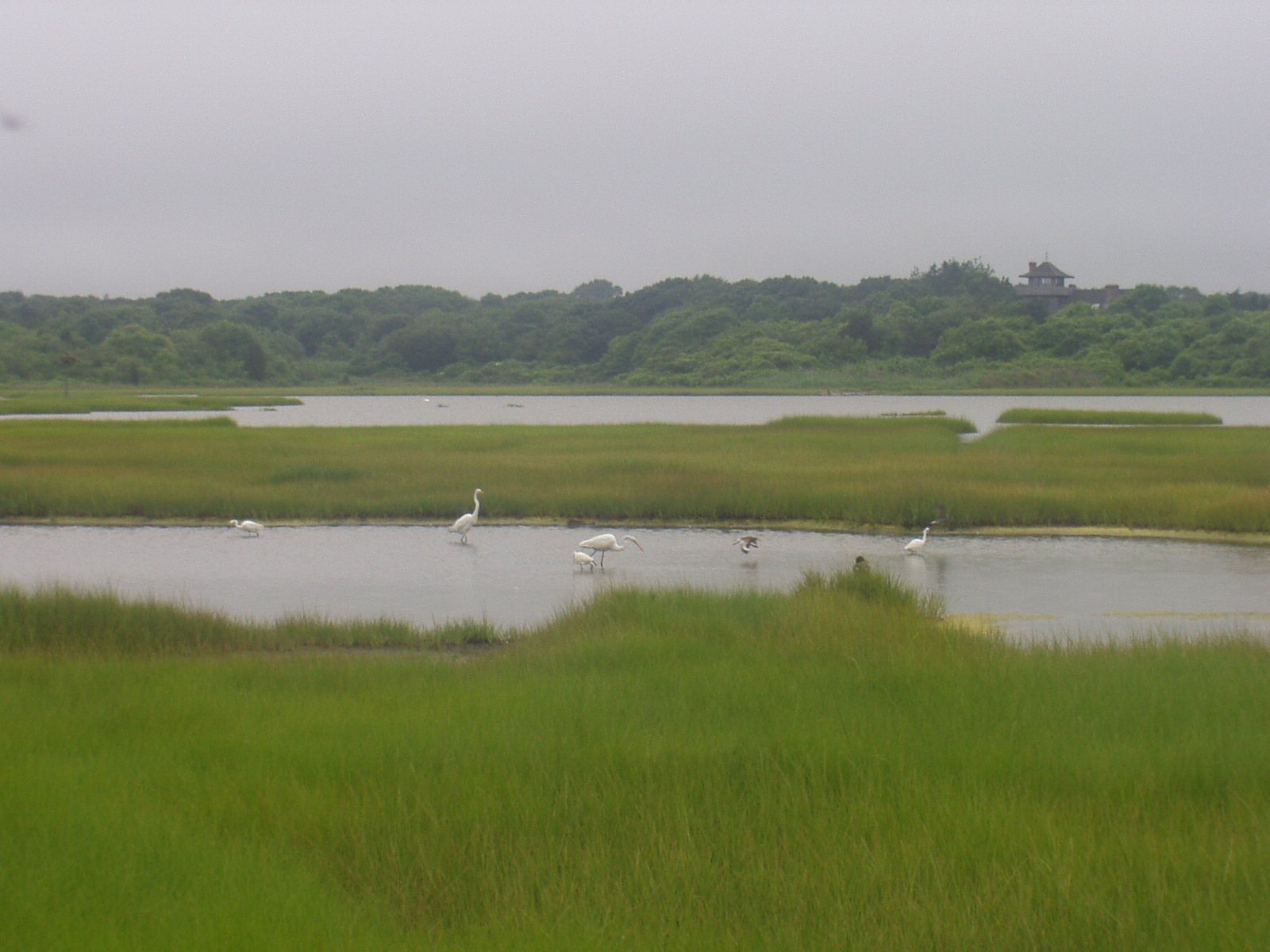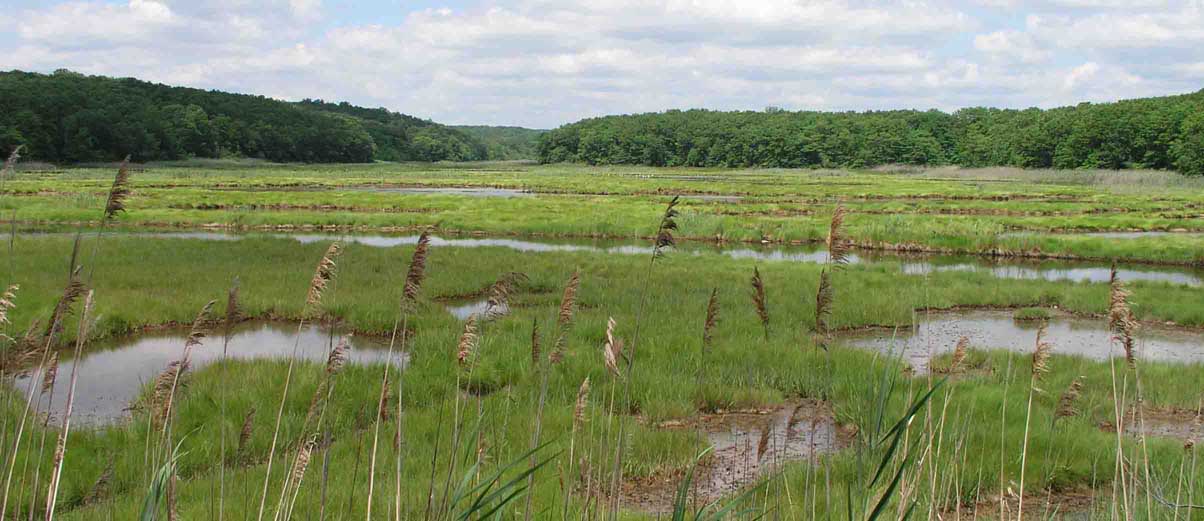Salt pannes and pools on:
[Wikipedia]
[Google]
[Amazon]
 Salt pannes and pools are water retaining depressions located within
Salt pannes and pools are water retaining depressions located within  * Low salt marsh panne
Usually devoid of vegetation, that may be present include smooth cordgrass (''
* Low salt marsh panne
Usually devoid of vegetation, that may be present include smooth cordgrass ('' Minimal vegetation often found on the upper half of the high salt marsh. It is typically deeper than forb and smooth cord-grass pannes. Usually flooded by the higher of the two
Minimal vegetation often found on the upper half of the high salt marsh. It is typically deeper than forb and smooth cord-grass pannes. Usually flooded by the higher of the two
 Brackish marsh panne variants occur in brackish marshes (short graminoid variant), one of the native dominant species is spike grass (''
Brackish marsh panne variants occur in brackish marshes (short graminoid variant), one of the native dominant species is spike grass (''ECOLOGICAL SYSTEM: NORTHERN ATLANTIC COASTAL PLAIN TIDAL SALT MARSH
 Salt pannes and pools are water retaining depressions located within
Salt pannes and pools are water retaining depressions located within salt
Salt is a mineral composed primarily of sodium chloride (NaCl), a chemical compound belonging to the larger class of salts; salt in the form of a natural crystalline mineral is known as rock salt or halite. Salt is present in vast quant ...
and brackish
Brackish water, sometimes termed brack water, is water occurring in a natural environment that has more salinity than freshwater, but not as much as seawater. It may result from mixing seawater (salt water) and fresh water together, as in estu ...
marsh
A marsh is a wetland that is dominated by herbaceous rather than woody plant species.Keddy, P.A. 2010. Wetland Ecology: Principles and Conservation (2nd edition). Cambridge University Press, Cambridge, UK. 497 p Marshes can often be found a ...
es. Pools tend to retain water during the summer months between high tides, whereas pannes generally do not. Salt pannes generally start when a mat of organic debris (known as ''wrack'') is deposited upon existing vegetation, killing it. This creates a slight depression in the surrounding vegetation which retains water for varying periods of time. Upon successive cycles of inundation and evaporation the panne develops an increased salinity greater than that of the larger body of water. This increased salinity dictates the type of flora and fauna able to grow within the panne. Salt pools are also secondary formations, though the exact mechanism(s) of formation are not well understood; some have predicted they will increase in size and abundance in the future due to rising sea levels
Rising may refer to:
* Rising, a stage in baking - see Proofing (baking technique)
*Elevation
* Short for Uprising, a rebellion
Film and TV
* "Rising" (''Stargate Atlantis''), the series premiere of the science fiction television program ''Starga ...
.
Salt pannes and pools are unique microhabitat
In ecology, the term habitat summarises the array of resources, physical and biotic factors that are present in an area, such as to support the survival and reproduction of a particular species. A species habitat can be seen as the physical ...
s dominated by various species of halophyte
A halophyte is a salt-tolerant plant that grows in soil or waters of high salinity, coming into contact with saline water through its roots or by salt spray, such as in saline semi-deserts, mangrove swamps, marshes and sloughs and seashores. Th ...
s, benthic plants and varying estuarine marine life that vary considerably in composition due to a variety of factors:
* Substrate type: affects the ability of the depression to hold water.
* depth and diameter: affect water temperature and evaporation rate in the depression. A shallow and wide pool will evaporate at a greater rate than a pool of the same volume of water which is deeper and has a smaller surface area. Evaporation rate also affects salinity, the higher the evaporation rate the higher the salinity, with rates as high as a third greater than ocean water.
* location within the intertidal zone, whether high marsh or low marsh and distance from the mean low tide mark which affects the length and duration of inundation until the depression is subject to evaporation as well as length of time until the rising tide replenishes the water volume.
These factors affect the types of species which can survive within the various types of salt pannes and pools.
Variants of salt pannes and pools:
Low salt marsh
 * Low salt marsh panne
Usually devoid of vegetation, that may be present include smooth cordgrass (''
* Low salt marsh panne
Usually devoid of vegetation, that may be present include smooth cordgrass (''Spartina alterniflora
''Sporobolus alterniflorus'', or synonymously known as ''Spartina alterniflora'', the smooth cordgrass, saltmarsh cordgrass, or salt-water cordgrass, is a perennial deciduous grass which is found in intertidal wetlands, especially estuarine salt ...
''), marine algae
Marine primary production is the chemical synthesis in the ocean of organic compounds from atmospheric or dissolved carbon dioxide. It principally occurs through the process of photosynthesis, which uses light as its source of energy, but it al ...
such as knotted wrack (''Ascophyllum nodosum
''Ascophyllum nodosum'' is a large, common cold water seaweed or brown alga (Phaeophyceae) in the family Fucaceae, being the only species in the genus ''Ascophyllum''. It is a seaweed that only grows in the northern Atlantic Ocean, also known in ...
'') and rockweeds ( Fucus spp.). The substrate is typically soft, silty mud.
High salt marsh
* Arrow-grass (forb) panne
Briefly flooded, very shallow with a moderate amount of vegetation usually dominated by Arrow grass (''Triglochin maritimum
''Triglochin maritima'' is a species of flowering plant in the arrowgrass family Juncaginaceae. It is found in brackish marshes, freshwater marshes, wet sandy beaches, fens, damp grassland and bogs. It has a circumboreal distribution, occurring ...
''), with the deeper sections possibly remaining unvegetated.
* Smooth cord-grass (short form) panne
Shallow anaerobic
Anaerobic means "living, active, occurring, or existing in the absence of free oxygen", as opposed to aerobic which means "living, active, or occurring only in the presence of oxygen." Anaerobic may also refer to:
* Anaerobic adhesive, a bonding a ...
depressions with poor drainage, poor water quality due to low nutrient levels and high concentrations of sulfides and similar compounds which inhibit plant growth. Short form (6-12" tall)smooth cord-grass (Spartina alterniflora) is the dominant plant species. Typically found on the high salt marsh, but can occasionally be found on the upper margins of low salt marsh.
Salt marsh mosquito panne
 Minimal vegetation often found on the upper half of the high salt marsh. It is typically deeper than forb and smooth cord-grass pannes. Usually flooded by the higher of the two
Minimal vegetation often found on the upper half of the high salt marsh. It is typically deeper than forb and smooth cord-grass pannes. Usually flooded by the higher of the two spring tide
Tides are the rise and fall of sea levels caused by the combined effects of the gravitational forces exerted by the Moon (and to a much lesser extent, the Sun) and are also caused by the Earth and Moon orbiting one another.
Tide tables ca ...
s, retains water for 2–3 weeks later until drying out. The female eastern salt marsh mosquito (''Aedes sollicitans
''Aedes sollicitans'', the eastern saltmarsh mosquito (also known as ''Ochlerotatus sollicitans''), is a species of mosquito native to the eastern seaboard of the United States and Canada as well as the entire Gulf coast and is also present in t ...
'') lays eggs on the exposed surface. The eggs lay dormant until the next time the panne floods.
Widgeon grass (''Ruppia maritima
''Ruppia maritima'' is an aquatic plant species commonly known as beaked tasselweed, ditch grass, tassel pondweed and widgeon grass. Despite its scientific name, it is not a marine plant; is perhaps best described as a salt-tolerant freshwa ...
'') - marsh minnow deepwater pool. Pools on the high salt marsh that are semi-permanently and permanently flooded. They are able to sustain populations of Sheephead minnow (''Cyprinodon variegatus variegatus''), Mummichogs, (Fundulus heteroclitus), and other species of small fish which may become trapped in the pools and benthic species of vegetation. Occasionally can be found at the upper edge of the low salt marsh.
Brackish water marsh
 Brackish marsh panne variants occur in brackish marshes (short graminoid variant), one of the native dominant species is spike grass (''
Brackish marsh panne variants occur in brackish marshes (short graminoid variant), one of the native dominant species is spike grass (''Distichlis spicata
''Distichlis spicata'' is a species of grass known by several common names, including seashore saltgrass, inland saltgrass, and desert saltgrass. This grass is native to the Americas, where it is widespread. It can be found on other continents a ...
''), some brackish marsh pannes are dominated by the narrow-leaved cattail (''Typha angustifolia
''Typha angustifolia'' L. (also lesser bulrush, narrowleaf cattail or lesser reedmace) is a perennial herbaceous plant of genus ''Typha''. This cattail is an "obligate wetland" species that is commonly found in the northern hemisphere in brackis ...
'') an invasive exotic species.
* Mixed graminoid - forb
A forb or phorb is an herbaceous flowering plant that is not a graminoid (grass, sedge, or rush). The term is used in biology and in vegetation ecology, especially in relation to grasslands and understory. Typically these are dicots without woo ...
panne
Shallow depressions flooded for only for a brief time and are characterized by a variable mix of graminoids and forbs. Frequent herbs include three-square rush ( Scirpus pungens), stout bulrush (S. robustus), arrow-grass, marsh creeping bent-grass (Agrostis stolonifera
''Agrostis stolonifera'' (creeping bentgrass, creeping bent, fiorin, spreading bent or carpet bentgrass) is a perennial grass species in the family Poaceae.
Description
''Agrostis stolonifera'' is stoloniferous and may form mats or tufts. The ...
), salt-loving spike-rush (''Eleocharis halophila
''Eleocharis halophila'', the saltmarsh spikerush, is a perennial halophytic plant endemic to salt marshes in eastern Canada, in Ontario in Hudson Bay and James Bay, Quebec in the St. Lawrence Seaway as far as the city of Quebec, Newfoundland an ...
''). Growing with less frequency are red fescue (''Festuca rubra
''Festuca rubra'' is a species of grass known by the common name red fescue or creeping red fescue. It is widespread across much of the Northern Hemisphere and can tolerate many habitats and climates. It is best adapted to well-drained soils in c ...
''), New York aster ('' Symphyotrichum novi-belgii'') silverweed, saltmeadow cordgrass (''Spartina patens
''Sporobolus pumilus'', the saltmeadow cordgrass, also known as salt hay, is a species of cordgrass native to the Atlantic coast of the Americas, from Newfoundland south along the eastern United States to the Caribbean and north-eastern Mexico. ...
''), and salt marsh rush.
* Sparsely vegetated panne
Saturated, mud dominated pannes are occasionally found in the transition zone next to forested uplands where they are shaded by overhanging tree branches thus inhibiting evaporation. This is the preferred habitat for the uncommon seaside crowfoot ('' Ranunculus cymbalaria''), where prostrate colonies may form small patches over the soil surface. Other graminoids and forbs scattered across the mud, or more often around the panne edge, include Virginia wild rye ('' Elymus virginicus''), chaffy salt sedge ('' Carex paleacea'') seaside goldenrod (''Solidago sempervirens
''Solidago sempervirens'', the seaside goldenrod or salt-marsh goldenrod, is a plant species in the genus ''Solidago'' of the family Asteraceae. It is native to eastern North America and parts of the Caribbean. It is an introduced species in the ...
''), marsh creeping bent grass, New York aster and smooth cordgrass.References
{{Wetlands Coastal and oceanic landforms Coastal geography Estuaries Water Wetlands